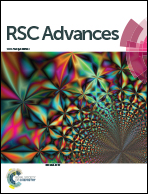Designing sequences with varied flexibility and stability through pair mutations
Abstract
Intrinsic conformational flexibility is a consequence of the rugged energy landscape of the protein which is encoded in its amino acid sequence. In this work, a self-consistent mean-field based theory is developed and applied on lattice and real proteins to design sequences with varying foldability and desired flexibility. Monte Carlo simulations are used to evaluate the conformational flexibility of the designed sequences in terms of the relative propensity of the sequence to choose the native state among the ensemble of near-native conformations. The mutation of specific residue pairs in the designed sequences affects their conformational flexibility. Site pairs which exhibit a greater deviation from the corresponding random values of the residue probabilities may be preferentially selected for pair mutation of residues to modulate the flexibility. The mutation of such residue pairs due to evolution may lead to significantly altered conformational flexibility and stability while retaining its sequence identity. This result is supported by experimental evidence [Lehmann et al., Protein Eng., 2000, 13, 49], which suggests that the conserved residues in a set of homologous protein sequences contribute more to the stability of the protein. Mutations of such residue pairs by decreasing the foldability lead to higher flexibility and may mimic protein evolution [Tomatis et al., Proc. Natl. Acad. Sci. U. S. A., 2008, 105, 20605]. The spatial distance between any two residues is minimally correlated to the generation of the mutations. However, long ranged correlation between residue pairs may also be important for specific residue pairs. A higher correlation between residue pairs is noted to be sufficient but not a necessary condition for accommodating higher generations of mutation.


 Please wait while we load your content...
Please wait while we load your content...